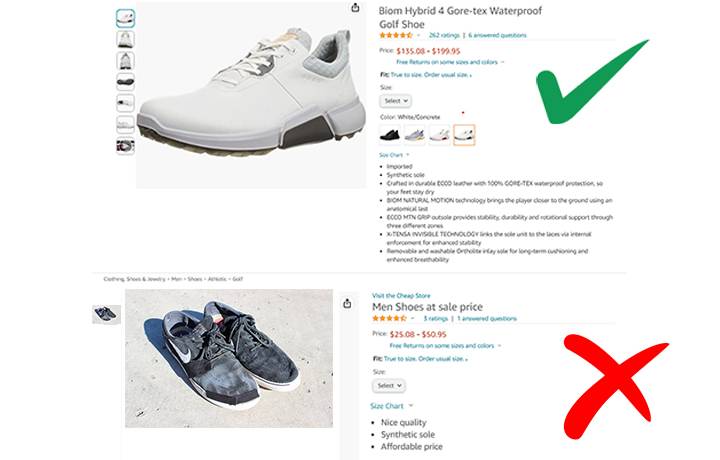
How to Reduce Marketplace Product Returns in 2024: A Definitive Guide
Introduction
No matter how painful, annoying, costly, and disappointing product returns are, they are still a part of the business. Selling on an eCommerce marketplace means you must deal with frequent order returns.
Although you cannot eliminate them completely, you can reduce the percentage of order returns. In this article, we will explore some practical ways that can help you reduce your product return rate. Let’s jump right in.
Why do customers return a product?
There are several reasons why customers return a product. The ones you face most may depend on your industry.
When customers want to return something on Amazon, they must specify why. Following are the reasons they can choose from:
Change of Mind
This general reason can hide other specific or accurate reasons for product returns. Some sellers opt not to offer “change of mind” as a valid reason in their product return policy.
However, to develop better customer relations, most sellers allow customers to return a product if they no longer feel like having it.
Wrong Product
Wrong product is one of the most common causes of product returns. Human error or the customer selecting the wrong product can occur no matter how compelling your outbound logistics are. Sometimes it’s entirely a customer’s error, and other times could be due to the incorrect product being packed and shipped.
Broken or damaged product

If you are receiving too many product returns due to damages, you should determine if the issues are with your supplier or occur during shipping. Then make appropriate changes with the supplier, shipper or packaging of the item that ships.
Wardrobing
Although this happens very seldom, some people buy products—a dress, for instance—and return them after using them once or twice. Wardrobing is also known as “free renting.“
Also Read: Amazon Return Errors That Qualify For Reimbursement
How to Reduce Product Returns?
Now that you know the main reasons why people send products back, we can talk about which ones you help reduce your marketplace returns.
Not all the reasons listed above are avoidable. For instance, you can only catch wardrobing if it is very apparent that the products do not meet the return criteria.
There are ways to avoid them. The two most prominent reasons are the delivery of damaged goods and not meeting customer expectations.
Preventing Delivery of Damaged Products
The delivery of damaged items results in a return and can harm your reputation in the marketplace and your selling privileges.
Here are a few things you can consider to reduce the shipment of damaged goods:
- Product Testing: As part of your internal policy, you should perform a quality check when you receive inventory from your supplier. Similarly, you should also examine goods and packaging prior to shipping to your customers. It will reduce the number of defective returns. It will also keep a check on the quality of your supplier’s goods also.
- Secured Packaging: Your product could run into many problems on its way to your customers. Thus, you should ensure that you have packed it securely. Use bubble wrap, thermocol sheets, or other protective packaging materials that provide safety to the products. It also conveys to your customers that you are a responsible seller.
- Trained Staff: Your employees should know how to pack different products. As an example, glassware and clothes might use different types of packaging. Similarly, your staff should know the protocols for testing a product before packing and shipping it.
- Quality Shipping Agents: You should only work with trusted carriers and shipping agencies. A quality delivery service that provides insurance and guarantees the safe transit of goods may cost more. But will be beneficial in the long run by reducing the number of product returns.
Proper Product Listing to Avoid Miscommunication
As mentioned, customers return products because they need them to meet their intended specs and requirements. A poorly described product listing causes the customer to be unsatisfied.
Finally, when the product reaches the customers, if they find it not up to expectations, they return it. Here are a few tips to make a product listing accurate yet convincing:
- Detailed Product Description: Since people who buy things online can’t see them in person, product descriptions are very important. You should ensure that the listings are not only detailed but also accurate. It’s good to list all the features, specs, and characteristics of a product in a clear and interesting way.
- High-Quality Pictures and Videos: A visual presentation of your products is just as important as a written description. Perhaps, even more so! High-quality pictures and videos showing the product from different angles can go a long way in removing any doubts that customers may have.
Conclusion
You can make your business stand out in the marketplace by preventing the delivery of damaged goods, providing accurate product listings and descriptions, and providing a quality shipping process.
Returns are not a metric of business success, but how you handle them is. You’re taking one step closer to building a thriving e-commerce empire by reducing product returns. Dealing with product returns can be a lot of work for businesses.
Reducing returns will pay dividends to the bottom line. As your trusted ecommerce partner, we can provide valuable expertise from helping you find reputable suppliers, shipping companies and updating listings for products. Contact us today to see where we can assist your growing online business.
FAQ’s
Yes, advancements in technology have introduced solutions like AI-powered product recommendations, virtual try-on tools for apparel, augmented reality for visualizing products in real-world settings, and predictive analytics for inventory management, all of which can help reduce returns.
Sellers can streamline the return process by offering hassle-free return policies, providing clear instructions for returning items, utilizing automated return management systems, and optimizing logistics to minimize return shipping times and costs.
Product returns can significantly impact a seller’s profitability and reputation on marketplaces. In 2024, with increasing competition and heightened customer expectations, minimizing returns has become crucial for success.











